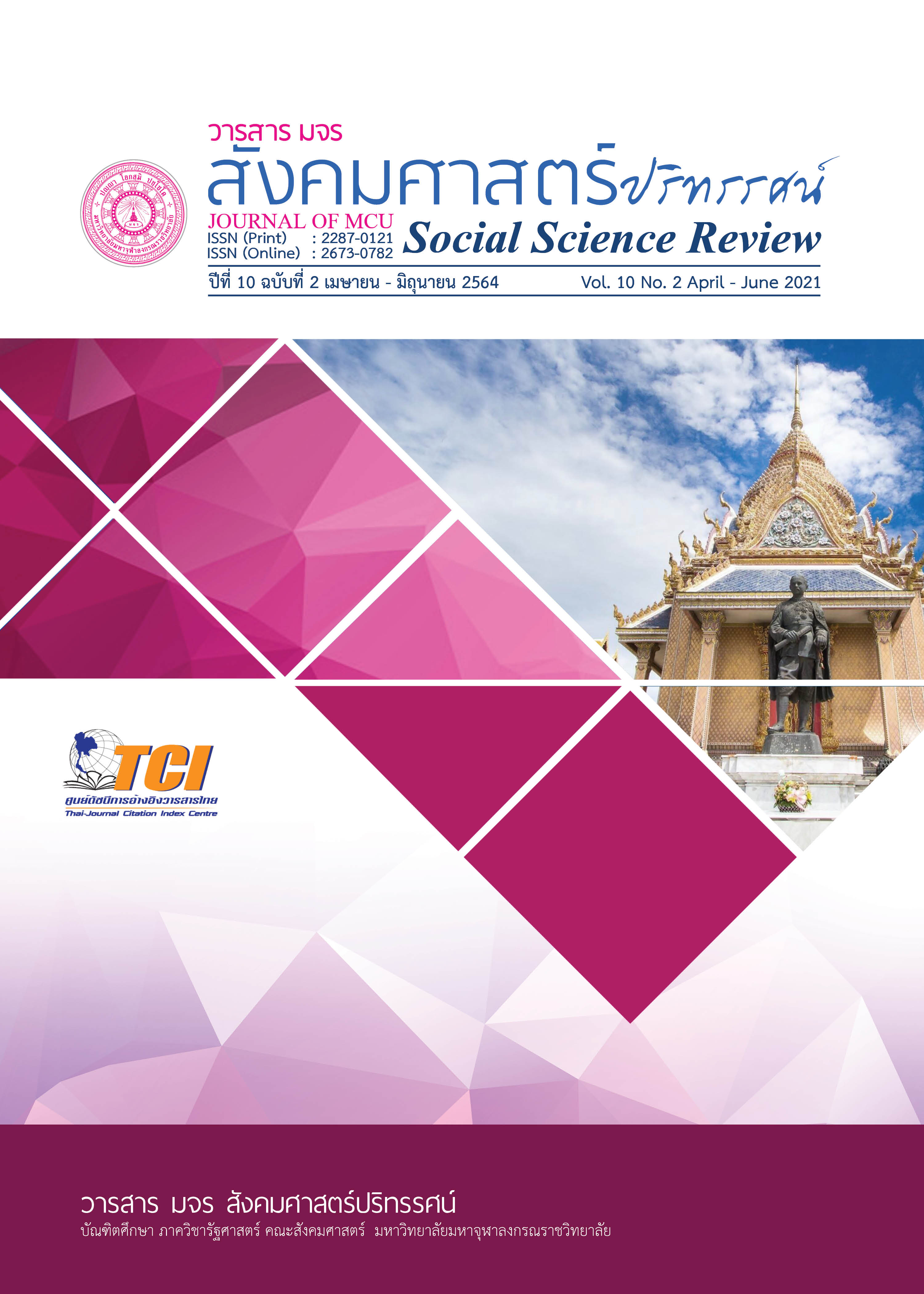การวินิจฉัยทางพุทธิปัญญาของนักศึกษามหาวิทยาลัยสุโขทัยธรรมาธิราช ด้วยโมเดล DINA
คำสำคัญ:
การวินิจฉัยทางพุทธิปัญญา, โมเดล DINA, การประเมินเชิงวินิจฉัยบทคัดย่อ
การวิจัยมีวัตถุประสงค์ 1) เพื่อวิเคราะห์คุณภาพข้อสอบด้วยทฤษฎีการทดสอบแบบดั้งเดิมและทฤษฎีการตอบข้อสอบ 2) เพื่อวินิจฉัยทางพุทธิปัญญาของนักศึกษามหาวิทยาลัยสุโขทัยธรรมาธิราชด้วยโมเดล DINA 3) เพื่อศึกษาข้อมูลเชิงลึกจากผลการวินิจฉัยทางพุทธิปัญญาเกี่ยวกับสาเหตุการไม่รอบรู้ของนักศึกษา และ 4) เพื่อนำเสนอแนวทางในการปรับปรุงการจัดการเรียนการสอน การวิจัยเป็นการวิจัยแบบผสมวิธี ข้อมูลที่ใช้คือ ผลการสอบภาคการศึกษาที่ 1 ปีการศึกษา 2560 จำนวน 6 ชุดวิชา การวิเคราะห์ข้อมูล ได้แก่ โมเดล DINA และการวิเคราะห์เนื้อหา
ผลการวิจัยพบว่า 1) แบบทดสอบมีความเที่ยงอยู่ระหว่าง 0.77 – 0.85 และจำนวนข้อสอบที่ยากและยากมากที่วิเคราะห์ด้วยทฤษฎีการตอบข้อสอบมีจำนวนข้อสอบที่ยากและยากมาก มากกว่าการวิเคราะห์ข้อสอบด้วยทฤษฎีการทดสอบแบบดั้งเดิม 2) มี 5 ชุดวิชาที่นักศึกษาส่วนใหญ่ไม่รอบรู้ทุกหน่วย และความน่าจะเป็นของความรอบรู้รายหน่วยในเล่มแรกจะสูงกว่าเล่มที่สอง 3) ชุดวิชาที่เป็นการคำนวณที่มีสูตรและสัญลักษณ์มากจะยาก ส่วนชุดวิชาที่เป็นการบรรยายเนื้อหาแต่ละหน่วยมาจากหลายๆ เรื่องที่ไม่ได้เชื่อมโยงกัน 4) มหาวิทยาลัยควรกำหนดนโยบายสนับสนุนงบประมาณให้ความช่วยเหลือนักศึกษาด้านการเรียนการสอนในชุดวิชาที่ยาก เนื้อหาที่เป็นการคำนวณ ควรใช้ภาพประกอบ ส่วนเนื้อหาที่ยากซับซ้อน ควรจัดทำสรุปประเด็นสำคัญท้ายหน่วยหรือตอน ให้ทำกิจกรรมเก็บคะแนนในชุดวิชาที่ยาก และจัดทำคลิปวิดีโอแบ่งเป็นตอนสั้นๆ คัดเลือกผู้สอนที่มีความเชี่ยวชาญทั้งด้านเนื้อหาและเทคนิคการสอน และออกแบบการวัดและประเมินผลในชุดวิชาที่ยากให้หลากหลายวิธี
เอกสารอ้างอิง
บุญศรี พรหมมาพันธุ์ และคณะ. (2538). รายงานการวิจัยสถาบัน เรื่อง การวิเคราะห์สาเหตุการลาออกกลางคันของนักศึกษา มหาวิทยาลัยสุโขทัยธรรมาธิราช. กรุงเทพฯ: มหาวิทยาลัยสุโขทัยธรรมาธิราช.
ศิริชัย กาญจนวาสี. (2552). ทฤษฎีการทดสอบแบบดั้งเดิม (Classical Test Theory) (พิมพ์ครั้งที่ 6). กรุงเทพฯ: โรงพิมพ์แห่งจุฬาลงกรณ์มหาวิทยาลัย.
สังวรณ์ งัดกระโทกและคณะ. (2560). รายงานการวิจัย เรื่อง การวินิจฉัยผลการทดสอบระดับชาติและข้อเสนอเชิงนโยบายในการใช้ผลการทดสอบระดับชาติเพื่อพัฒนาผู้เรียน. กรุงเทพมหานคร: สถาบันทดสอบทางการศึกษาแห่งชาติ (องค์การมหาชน).
Torre, J. (2009). DINA Model and Parameter Estimation: A Didactic. Journal of Educational and Behavioral Statistics, 34, 115-130.
Rupp, A. A. et al. (2010). Diagnostic Measurement: Theory, Methods and Applications. New York: The Guilford Press.
ดาวน์โหลด
เผยแพร่แล้ว
รูปแบบการอ้างอิง
ฉบับ
ประเภทบทความ
สัญญาอนุญาต
ลิขสิทธิ์ (c) 2021 วารสาร มจร สังคมศาสตร์ปริทรรศน์

อนุญาตภายใต้เงื่อนไข Creative Commons Attribution-NonCommercial-NoDerivatives 4.0 International License.
เพื่อให้เป็นไปตามกฎหมายลิขสิทธิ์ ผู้นิพนธ์ทุกท่านต้องลงลายมือชื่อในแบบฟอร์มใบมอบลิขสิทธิ์บทความให้แก่วารสารฯ พร้อมกับบทความต้นฉบับที่ได้แก้ไขครั้งสุดท้าย นอกจากนี้ ผู้นิพนธ์ทุกท่านต้องยืนยันว่าบทความต้นฉบับที่ส่งมาตีพิมพ์นั้น ได้ส่งมาตีพิมพ์เฉพาะในวารสาร มจร สังคมศาสตร์ปริทรรศน์ เพียงแห่งเดียวเท่านั้น หากมีการใช้ภาพหรือตารางหรือเนื้อหาอื่นๆ ของผู้นิพนธ์อื่นที่ปรากฏในสิ่งตีพิมพ์อื่นมาแล้ว ผู้นิพนธ์ต้องขออนุญาตเจ้าของลิขสิทธิ์ก่อน พร้อมทั้งแสดงหนังสือที่ได้รับการยินยอมต่อบรรณาธิการ ก่อนที่บทความจะได้รับการตีพิมพ์ หากไม่เป็นไปตามข้อกำหนดเบื้องต้น ทางวารสารจะถอดบทความของท่านออกโดยไม่มีข้อยกเว้นใดๆ ทั้งสิ้น





